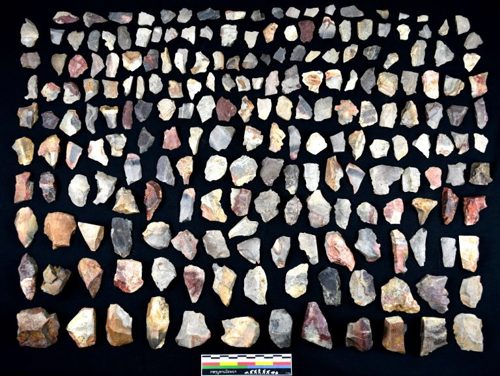6,000 year-old artefacts unearthed near Sepon Mine in Lao PDR
February 03, 2021
Recently, we unearthed hundreds of ancient artefacts, built on our two-decades long partnership with the Lao Government, University of Laos, and James Cook University of Australia.
Archaeologists have unearthed hundreds of 6,000-year-old artefacts at Napakhen village, Vilabouly District, Savannakhet Province, Lao PDR. These included axes and implements from the Paleolithic era (Stone Age) – when humans began making tools before the introduction of mining and trading in this region.
These discoveries are possible due to a partnership between Lane Xang Minerals Limited (LXML), the Department of Heritage (DoH) of the Ministry of Information, Culture and Tourism, the National University of Laos, and James Cook University of Australia. The fieldwork has united a unique community at local, national and international levels over several decades. Volunteers from Vientiane, local villagers, Australian and Lao students, archaeologists, and officials from the DoH cooperate to conduct research. This discovery resulted from field work on 9 to 25 January 2021. Four field missions are held every year.
Since 2003, LXML has invested over US$1.5 million to support archaeological research and cultural heritage preservation for future generations in Lao PDR.
Remarkable discoveries have been made at Sepon mine. In March 2018, archaeologists found more than 200 antique mine shafts dating back over 3,000 years. Vilabouly is recognised as one of the first mining and metallurgy areas in Southeast Asia. We believe ancient mining around Sepon mine continued to about 1,300 years ago (700 AD) where people excavated rich copper ore, refining it in ‘Peun Baolo’ and ‘Thong Na-Gneuak’ (Dragon Field). These dates have been confirmed scientifically from bamboo mats found in well-preserved mineshafts in compacted wet clay below the surface (10 to 40 meters deep).

Other artefacts include mining equipment, wooden ladders, pulleys, mallets, bamboo baskets, rope made from lianas, a ‘Dong Son’ bronze era drum on display at the National Museum in Vientiane, crucibles, copper ingots, jewellery, and ceremonial items highlighting Laos’ pivotal place in regional history.
In 2019 LXML handed over 7,800 artefacts made from copper, bronze, chalcedony (gems), ceramics, and wood, found near Sepon mine to the Lao Government.
Mining has always been an essential part of civilisation and society throughout history. We look forward to revealing more exciting discoveries about Lao culture and history in time.



